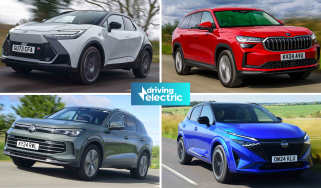What is a hybrid car?
What is a hybrid car, what are the different types of hybrid cars and how do they work? Here's everything to you need to know...
These days, it’s difficult to come across a car brand that doesn’t sell some type of hybrid-electric vehicle (HEV), while some like Lexus and Volvo offer the technology across their entire line-ups. So with electrification being the hottest trend in the car world right now, chances are, if you’re in the market for a brand-new car, you’ll have a smattering of hybrid options to choose from.
Essentially, all hybrids utilise multiple means of propulsion – most of the time it’s an electric motor and a petrol engine – however, there are various types of hybrids on the market, the main three being mild hybrids, full hybrids and plug-in hybrids. Each has its upsides and downsides, but our comprehensive guide is here to explain everything.
Read on to find out all you need to know about how hybrids work, which types of driving the different kinds are best suited to and whether a hybrid should be on the shortlist for your next car…
How does a hybrid car work and what are the different types of HEV?
There are several different types of hybrid cars and although all of them combine electrical and fossil-fuel power to some degree, each works in a slightly different way. Here's a rundown of them all.

1. Full hybrid
The most common type of hybrid car is a 'full hybrid', also called a ‘self-charging hybrid’ by Toyota and Lexus. This is where the car has an internal-combustion engine – often petrol, but sometimes diesel – as well as a battery and electric motor. Most non-plug-in hybrids are powered either by the engine alone, the electric motor alone, or with the engine working in tandem with the electric motor.
The now-discontinued Toyota Prius is perhaps the most well known hybrid. It was the first full hybrid car to be sold in the UK and has been a sales success ever since its launch in 2000. The last Prius was powered by a 1.8-litre petrol engine paired with an electric motor. And like most hybrids, the Prius was either fully powered by the electric motor, the engine, or a combination of the two.
The battery in full hybrids is charged by the engine, meaning you don’t have to plug it in to charge like you would an EV or plug-in hybrid. The battery is also charged when slowing, thanks to regenerative braking that recuperates kinetic energy and transfers it to the battery. The downside of this type of hybrid is that it can only travel in zero-emissions electric mode at low speeds and for very short distances.
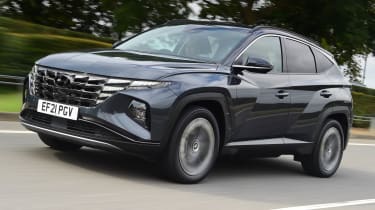
2. Plug-in hybrid
A plug-in hybrid, or 'PHEV' for short, still pairs an engine with an electric motor, which can work either alone or in tandem. However, the key difference is that the battery in a PHEV is much bigger than a full hybrid's, allowing the car to travel further in pure-electric mode.
Another important distinction is that while the battery in a PHEV can be recharged on the move, you’ll need to plug the car into a home wallbox or public charging point to get the most electric range and thus keep their running costs to a minimum. Once you run the battery flat they’re essentially just extra weight you need to cover around, which can really bring down your fuel economy.
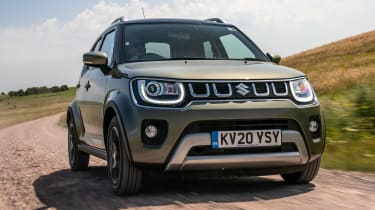
3. Mild hybrid
Mild hybrids also use an electric motor alongside a combustion engine, but unlike with full and plug-in hybrids, the two power sources can’t be used independently of one another. Instead, the small electric motor is used solely to assist the engine. Often, this takes the form of a 48-volt system that features an integrated starter-generator, which acts as both a starter motor and a power bank to assist the engine.
These are typically the cheapest way into hybrid ownership, mild hybrids offer a simpler powertrain with modest power and efficiency gains. You’ll find mild hybrid technology featured in an enormous variety of cars from the Suzuki Ignis city car and Swift supermini, up to the latest Mercedes C-Class and S-Class.
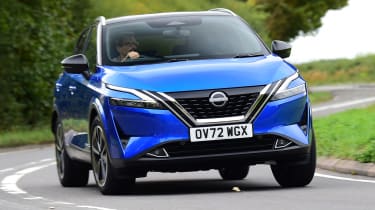
4. Range-extender hybrid
While the internal-combustion engine in the other types of hybrids we’ve mentioned can drive the car’s wheel, a range-extender or ‘series hybrid’ uses its engine to generate energy for an electric motor that drives the wheels. Range-extenders like the BMW i3 REx fell out of favour as the range of pure-electric cars increased, but the new Nissan Qashqai e-Power is an example of this technology. Nissan calls it “an EV unplugged”, with the wheels driven by a 188bhp electric motor fed by a small 2.1kWh battery, the energy for which comes from a 1.5-litre petrol engine.
Hybrid car pros and cons – are HEVs worth it?
Full hybrids make a lot of sense for those who cover a lot of miles, or spend a good amount of time in stop-start traffic. You don’t need to plug in a full hybrid anywhere to charge it, so they’re very convenient, and makes them ideal for those who don’t have a wallbox at home or can’t get one installed, They’re also lighter than plug-in hybrids because they don’t use such huge batteries, often making them more economical on longer journeys, plus they’re generally less expensive than PHEVs, too.
You obviously can’t travel very far on electric power alone – usually just a mile or two in a full hybrid – but because driving around town often involves a lot of braking, the regenerative brakes help keep the battery charged, giving you a longer electric driving range.
Plug-in hybrids are best suited to those who want a stepping stone to a fully electric car, and who either have access to charging points or can get installed at home. The biggest benefit is that you can travel pretty far without using a drop of petrol; the latest Range Rover PHEV, for example, can cover up to 70 miles in EV mode.
However, it’s vital that plug-in hybrids are kept as fully charged as possible whenever possible, because once the battery runs flat you’re essentially driving around in an extremely heavy petrol or diesel car because of the battery and motor. The result is pretty poor fuel economy once the battery is flat.
Road tax for hybrid cars (HEVs)
Hybrid cars fall into a lower tax band than their internal-combustion-engined equivalents. For example, a Kia Niro Hybrid (or any other full hybrid) costs £145 a year to tax, compared to £155 for a purely petrol or diesel-powered car. Used hybrids and plug-ins have even lower tax rates. For example, a Prius registered before 1 April 2017 pays zero road tax. In fact, any vehicle emitting under 100g/km of CO2 registered before then pays zero.
How do hybrid cars (HEVs) charge – and do you have to charge them?
A full hybrid doesn’t need to be plugged in to charge. Instead, the on-board battery is charged by the internal-combustion engine as the vehicle drives, and also via kinetic energy captured when you’re slowing down. Some full hybrids, like the latest Kia Niro Hybrid, have similar regenerative braking systems to electric cars, with multiple strengths of regen to choose from. With a plug-in hybrid electric vehicle, charging is also done using the engine and brakes, however, because of their larger battery sizes, you’ll be more out of a PHEV if you plug it in to charge, either at home or at a public charging station.
Recommended
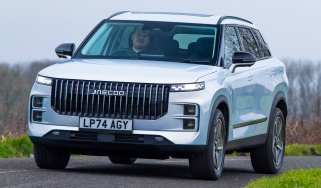
PHEV Deal of the Day: Jaecoo 7 family SUV for £270 per month
Most Popular

EV Deal of the Day: Dacia Spring is amazingly good value at £116 per month

EV Deal of the Day: budget-friendly Ford Capri for just £234 a month

